Upgrade to a 90+ Efficiency Furnace for Comfort & Savings

Comprehensive Table of Contents for High-Efficiency Furnace UpgradeTable Of Contents:
- Upgrade to a High Efficiency Furnace for Enhanced Comfort and Energy Savings
- Key Takeaways
- Understanding High Efficiency Furnaces
- Benefits of Upgrading to a High Efficiency Furnace
- Factors to Consider Before Upgrading Your Furnace
- Furnace Installation Process
- Common Issues in High Efficiency Furnaces
- Finding Reliable HVAC Contractors Near You
- Frequently Asked Questions About High Efficiency Furnaces
- Frequently Asked Questions
- Conclusion
High-Efficiency Furnace Upgrade: Boost Comfort & Cut Energy Costs
Are you tired of high energy bills and inconsistent heating in your home? Upgrading to a high-efficiency furnace can solve these problems. This article will explain how high-efficiency furnaces work, their benefits, and what to consider before upgrading. You’ll learn about potential energy savings, improved comfort, and the installation process. By the end, you’ll have the knowledge to make an informed decision about upgrading your home’s heating system.
Key Takeaways
- High efficiency furnaces offer superior performance and energy savings with AFUE ratings of 90% or higher
- Regular maintenance is crucial for optimal performance and longevity of high efficiency furnaces
- Upgrading to a high efficiency furnace can significantly reduce energy bills and environmental impact
- Professional installation by qualified HVAC contractors ensures proper system functionality and safety
- Local HVAC services provide quick response times and tailored solutions for homeowners’ heating needs
Understanding High Efficiency Furnaces
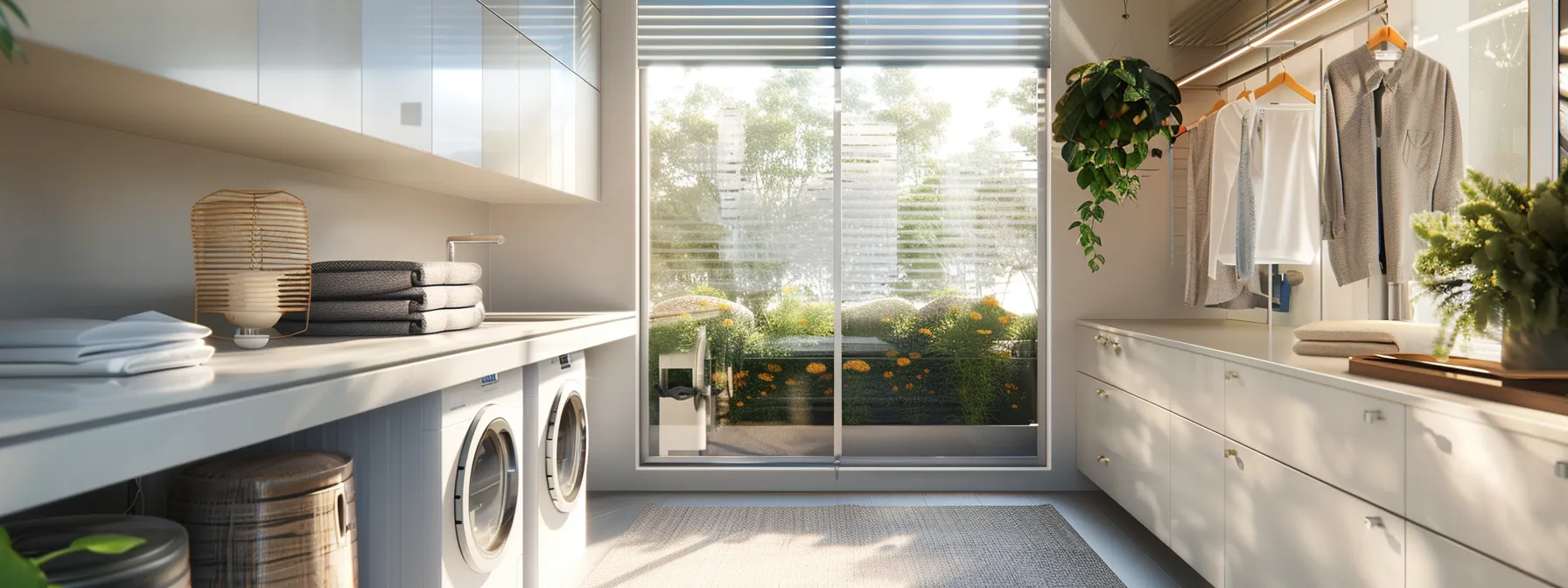
High efficiency furnaces offer superior performance and energy savings for homeowners. This section explores the defining characteristics of these advanced heating systems, their key features, and the energy efficiency ratings that guide consumer choices. Understanding these aspects helps customers make informed decisions when considering furnace repairs, furnace exchange, or upgrades, potentially qualifying for tax credits while improving their home’s air conditioning and heating capabilities.
What Defines a High Efficiency Furnace?
A high efficiency furnace represents a significant advancement in heating technology, utilizing innovative design to maximize energy use. These systems convert a larger percentage of fossil fuel into usable heat compared to standard models, resulting in lower energy consumption and reduced utility bills. The best furnace repair companies recommend high efficiency furnaces for homeowners seeking optimal performance and cost savings.
High efficiency furnaces are characterized by their Annual Fuel Utilization Efficiency (AFUE) rating, which measures the percentage of fuel converted into heat. These advanced systems typically boast AFUE ratings of 90% or higher, with some models reaching up to 98.5% efficiency. HVAC service providers emphasize that this increased efficiency translates to significant energy savings over the furnace’s lifespan.
Another defining feature of high efficiency furnaces is their sealed combustion system, which draws air from outside the home for combustion. This design enhances safety and efficiency by preventing heat loss and reducing the risk of carbon monoxide leaks. Plumbers and HVAC technicians often highlight this feature when discussing the benefits of upgrading to a high efficiency furnace with homeowners.
Key Features of High Efficiency Furnaces
High efficiency furnaces incorporate advanced heat exchangers that maximize heat transfer, ensuring optimal warmth distribution throughout the home. These systems often feature variable-speed blowers, allowing for precise temperature control and improved accessibility to consistent comfort. Local AC repair technicians emphasize the importance of these components in enhancing overall system performance.
Modern high efficiency furnaces utilize electronic ignition systems instead of traditional pilot lights, improving safety and reducing energy consumption. This feature eliminates the need for a constantly burning flame, contributing to the system’s overall efficiency. Plumbing repair experts often highlight this advancement when discussing the benefits of upgrading older heating systems.
Many high efficiency furnaces come equipped with smart thermostat compatibility, enabling homeowners to optimize their heating schedules and reduce energy waste. This integration allows for remote temperature adjustments and provides valuable insights into energy usage patterns. 24-hour furnace repair services frequently recommend these smart features to homeowners seeking enhanced control over their heating systems.
Energy Efficiency Ratings Explained
Energy efficiency ratings for furnaces are measured by the Annual Fuel Utilization Efficiency (AFUE) percentage. This rating indicates how effectively a furnace converts fuel into heat, with higher percentages signifying greater efficiency. Residential HVAC repair professionals use AFUE ratings to guide homeowners in selecting the most efficient heating systems for their homes.
High efficiency furnaces typically have AFUE ratings of 90% or higher, surpassing the performance of standard models. These advanced systems incorporate sophisticated technologies, such as variable-speed blowers and advanced heat exchangers, to maximize energy utilization. Commercial HVAC repair experts often recommend high efficiency furnaces for businesses seeking to reduce energy costs and improve their heating infrastructure.
When considering a furnace upgrade, homeowners should evaluate the potential energy savings against the initial investment. The following factors influence the overall efficiency and performance of a high efficiency furnace:
- Proper sizing and installation by qualified HVAC technicians
- Regular maintenance and circuit breaker inspections
- Integration with smart thermostats for optimal temperature control
- Insulation quality and ductwork condition in the home
The old furnace wheezed its last breath. A new high-efficiency model stood ready, promising warmth and savings.
Benefits of Upgrading to a High Efficiency Furnace
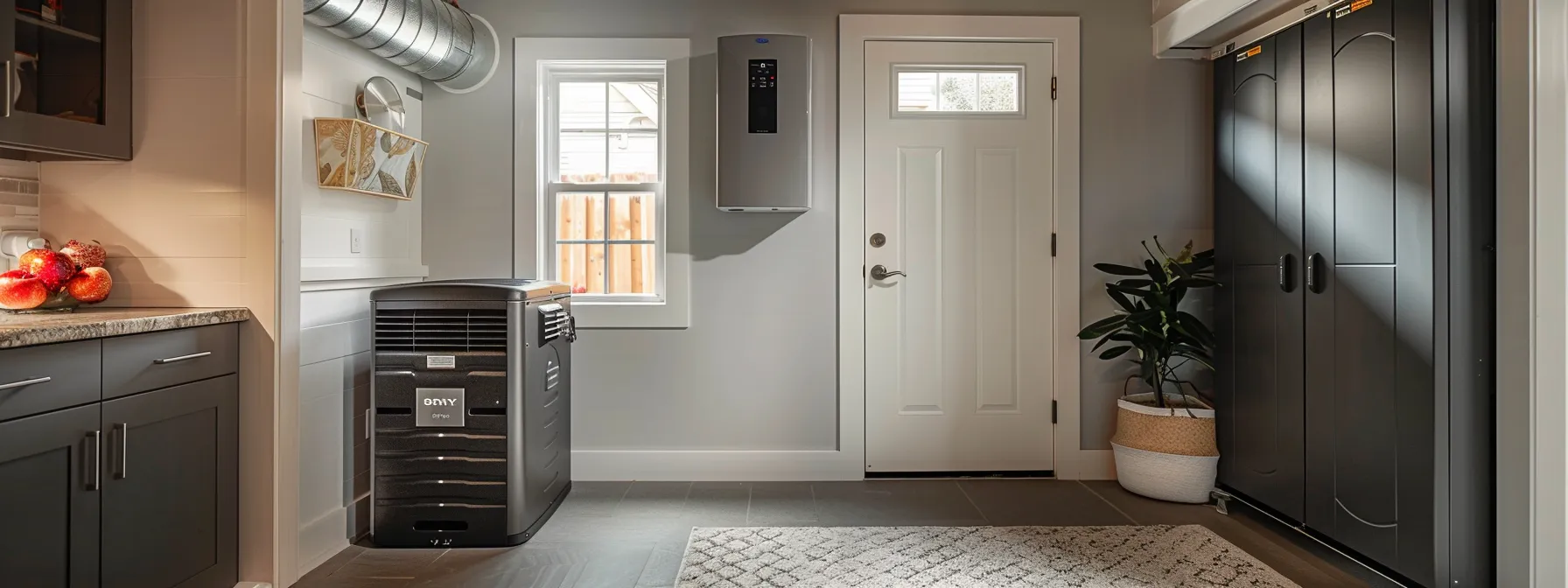
Upgrading to a high efficiency furnace offers homeowners enhanced comfort, significant energy savings, and environmental benefits. These advanced systems, including boilers, provide improved temperature control and air quality while reducing carbon monoxide risks. Professional furnace repair and Home Depot HVAC installation services, backed by thorough background checks, ensure optimal performance and safety for homeowners seeking to maximize their heating system’s efficiency.
Enhanced Comfort Levels in Your Home
High efficiency furnaces provide superior temperature control throughout the home. The advanced combustion systems in 90% efficient furnaces ensure consistent heat distribution, eliminating cold spots and drafts. HVAC ductwork installation professionals can optimize airflow for maximum comfort with these systems.
Variable-speed blowers in high efficiency furnaces allow for precise temperature adjustments. This feature enables homeowners to maintain their desired comfort level while minimizing energy consumption. Air conditioning companies often recommend these furnaces for their ability to integrate seamlessly with cooling systems, providing year-round comfort.
Furnace installation of a high efficiency model can significantly improve indoor air quality. These systems typically incorporate advanced filtration technologies, reducing airborne contaminants and allergens. Homeowners experience cleaner, healthier air, contributing to overall well-being and comfort in their living spaces.
Significant Savings on Energy Bills
High efficiency furnaces with advanced ignition systems consume significantly less energy than older models, resulting in substantial savings on monthly utility bills. Homeowners who upgrade their heating systems often experience a noticeable reduction in energy costs, especially during peak winter months. Furnace repair services emphasize the long-term financial benefits of investing in these efficient units.
The improved efficiency of modern furnaces translates to lower operational costs over time. Technicians recommend regular maintenance to ensure optimal performance and maximize energy savings. By integrating a high efficiency furnace with other energy-saving devices like programmable thermostats and humidifiers, homeowners can further reduce their energy consumption and costs.
Energy-efficient furnaces contribute to lower environmental impact and may qualify homeowners for tax incentives or rebates. The cost savings potential of these systems can be significant, as illustrated in the following table:
| Furnace Efficiency | Annual Energy Cost | 10-Year Savings |
|---|---|---|
| 80% AFUE | $1,200 | Baseline |
| 95% AFUE | $1,010 | $1,900 |
| 98% AFUE | $980 | $2,200 |
Environmental Benefits of Higher Efficiency
High efficiency furnaces contribute significantly to reducing greenhouse gas emissions. By consuming less fuel to produce the same amount of heat, these systems decrease carbon dioxide output and other pollutants associated with fossil fuel combustion. The Inflation Reduction Act incentivizes homeowners to adopt these environmentally friendly heating solutions, promoting cleaner air and a reduced carbon footprint.
Advanced furnace technologies help conserve natural resources by optimizing fuel utilization. This efficiency extends beyond home heating to impact other energy-intensive processes like water heating and vehicle fuel consumption. By reducing overall energy demand, high efficiency furnaces play a crucial role in preserving finite resources and promoting sustainable energy practices.
Modern high efficiency furnaces incorporate advanced safety features that minimize the risk of carbon monoxide leaks. These systems often include sealed combustion chambers and improved venting mechanisms, ensuring that potentially harmful gases are safely expelled from the home. This enhanced safety profile not only protects residents but also contributes to a cleaner indoor environment.
The old furnace had served its time. Now, before rushing into an upgrade, smart homeowners weigh their options carefully.
Factors to Consider Before Upgrading Your Furnace
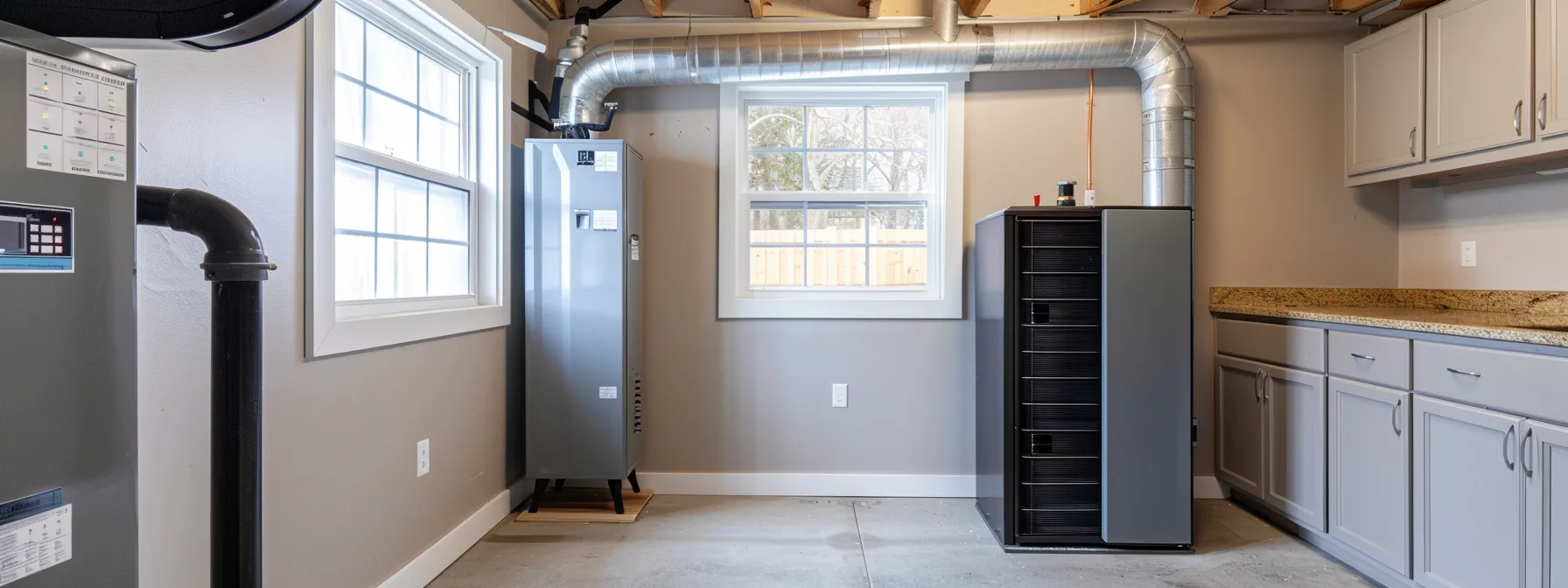
Before upgrading to a high efficiency furnace, homeowners should carefully evaluate their current heating system, identify their home’s specific heating needs, and understand installation costs. This assessment process involves examining the existing furnace’s performance, considering factors like energy star ratings, and exploring options such as heat pumps or gas systems. Homeowners can benefit from consulting furnace sales and installation experts near them to determine the most suitable and cost-effective heating solution for their property.
Evaluating Your Current Heating System
Assessing the current heating system’s performance is crucial before considering an upgrade to a high efficiency furnace. Homeowners should evaluate factors such as energy consumption, indoor air quality, and overall comfort levels. Regular maintenance and air duct cleaning can significantly impact system efficiency and longevity.
The age and condition of the existing furnace play a vital role in determining the need for an upgrade. Older systems may exhibit increased noise levels and reduced efficiency, leading to higher energy bills. Homeowners should consider the he furnace cost in relation to potential long-term savings and improved comfort.
A comprehensive evaluation of the current heating system should include an assessment of its compatibility with modern technologies and energy-saving features. Homeowners can benefit from professional inspections to identify potential issues and determine the most cost-effective solution. Key factors to consider when evaluating the current heating system include:
- Energy efficiency ratings and fuel consumption
- Indoor air quality and filtration effectiveness
- Noise levels and overall system performance
- Maintenance history and frequency of repairs
- Compatibility with smart home technologies
Identifying Your Home’s Heating Needs
Identifying a home’s heating needs requires a comprehensive assessment of various factors. Homeowners should consider the size of their living space, insulation quality, and local climate conditions. Professional furnace service technicians can conduct thorough evaluations to determine the optimal heating capacity required for maximum comfort and efficiency.
The home’s air quality plays a crucial role in selecting an appropriate heating system. High-efficiency furnaces with advanced air filter technologies can effectively remove dust and other airborne particles, improving indoor air quality. This feature is particularly beneficial for households with allergy sufferers or respiratory concerns.
Environmental impact is an important consideration when upgrading to a high-efficiency furnace. Modern systems significantly reduce greenhouse gas emissions and NOx levels compared to older models. Homeowners can contribute to a cleaner environment while enjoying improved heating performance by choosing an eco-friendly heating solution. Key factors to consider when identifying heating needs include:
- Home size and layout
- Insulation quality and energy efficiency
- Local climate conditions and temperature fluctuations
- Indoor air quality requirements
- Environmental impact and emission reduction goals
Understanding Installation Costs
Understanding installation costs is crucial when considering an upgrade to a high efficiency furnace. Homeowners should factor in expenses beyond the unit itself, including labor, ductwork modifications, and essential safety features like carbon monoxide detectors. HVAC contractors in the area can provide detailed estimates tailored to the specific home and heating requirements.
The investment in a high efficiency furnace extends to components such as the storage tank and valve systems. These elements contribute to the overall efficiency and safety of the heating system. Homeowners should consult with reputable HVAC professionals to ensure all necessary components are included in the installation quote.
While initial costs may seem high, the long-term energy savings often justify the investment in a high efficiency furnace. Homeowners should consider factors such as improved energy efficiency, reduced utility bills, and potential tax incentives when evaluating the overall value of the upgrade. Professional installation by qualified HVAC contractors ensures optimal performance and safety of the new heating system.
The decision made, it was time for action. The old furnace would soon be replaced, ushering in a new era of warmth and efficiency.
Furnace Installation Process
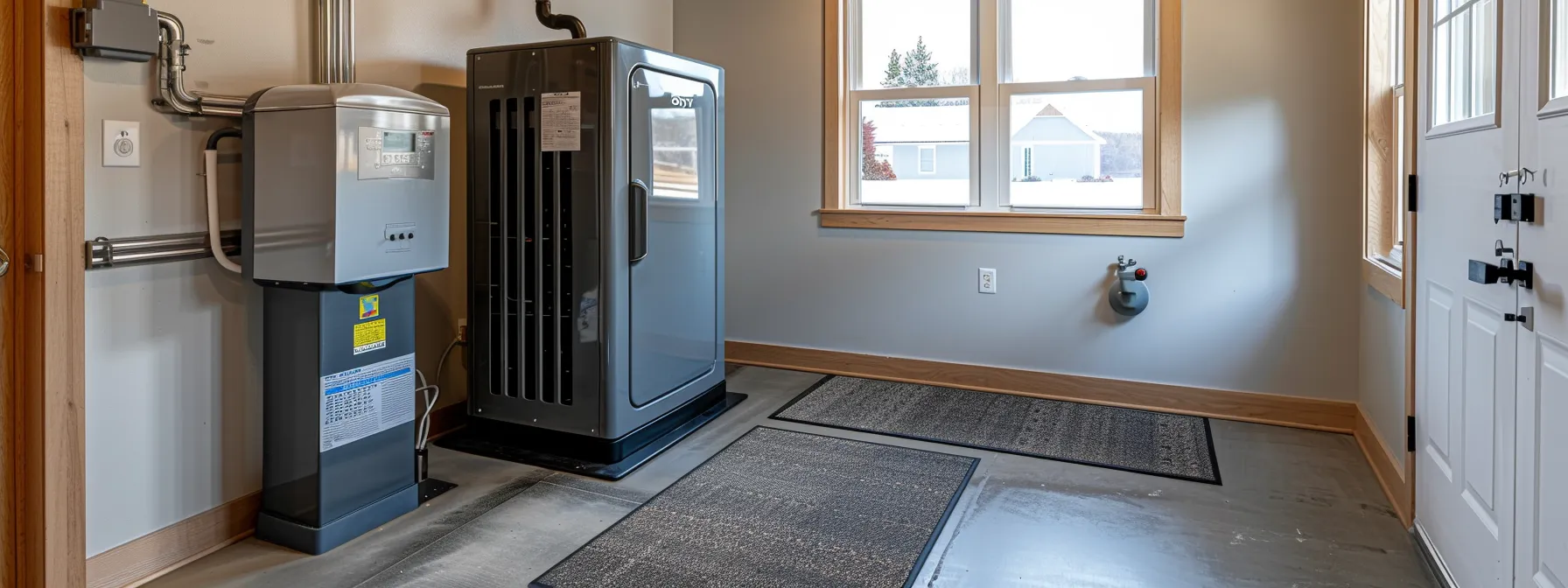
The furnace installation process involves several key steps, from selecting the right 95% efficiency furnace to preparing the home for installation. This section outlines the installation procedure, guides homeowners in choosing a qualified local HVAC contractor, and provides tips for preparing the space. Understanding these aspects ensures a smooth transition to a high-efficiency heating system, optimizing comfort and energy savings.
Steps Involved in Installing a New High Efficiency Furnace
The installation of a new high efficiency furnace begins with a thorough assessment of the home’s heating requirements by a qualified HVAC technician. This evaluation determines the appropriate size and capacity of the furnace, ensuring optimal performance and energy efficiency. Natural gas furnaces are popular choices in the United States due to their cost-effectiveness and reliability.
Once the appropriate furnace is selected, the installation team prepares the area by removing the old unit and making necessary modifications to accommodate the new system. This may involve updating ductwork, electrical connections, and gas lines to meet current safety standards. Homeowners seeking affordable AC repair services should inquire about package deals that include furnace installation.
The final steps involve installing the new high efficiency furnace, connecting it to existing systems, and performing a series of tests to ensure proper functionality. Professional technicians conduct thorough inspections, including checking for gas leaks and verifying proper ventilation. Many homeowners searching for “furnace repair near me” discover that upgrading to a high efficiency model offers long-term benefits and improved marketing value for their property.
Choosing the Right HVAC Contractor
Selecting a qualified HVAC contractor is crucial for a successful high efficiency furnace installation. Homeowners should research local companies, verifying their credentials and certifications with the United States Department of Energy. Reputable contractors often offer comprehensive services, including tankless water heating solutions and HVAC repair.
When evaluating potential contractors, homeowners should request detailed quotes and inquire about their experience with high efficiency furnace installations. Professional HVAC companies typically provide clear communication via email and offer transparent pricing for both equipment and labor. They should also be knowledgeable about energy-efficient options and potential rebates.
Homeowners considering a switch to a high efficiency furnace should prioritize contractors who offer post-installation support and maintenance services. Reliable HVAC professionals will ensure proper system calibration, explain the new furnace’s features, and provide guidance on optimal usage for maximum energy savings.
Preparing Your Home for Installation
Preparing the home for high efficiency furnace installation involves clearing the area around the existing unit and ensuring proper access for the installation team. Homeowners should remove any obstacles that might impede the removal of the old furnace or the installation of the new one. This preparation facilitates efficient work for same day AC repair and installation services.
Homeowners should inspect and clean the area where the new furnace will be installed, including the air handler and exhaust system. This step helps identify any potential issues with existing pipes or ductwork that may need addressing during the installation process. For 24/7 HVAC repair and installation services, a clean and accessible workspace is crucial for timely completion.
Prior to installation, homeowners should ensure proper ventilation and safety measures are in place. This includes verifying that carbon monoxide detectors are functional and strategically placed throughout the home. Adequate preparation not only streamlines the installation process but also enhances safety for both technicians and residents. The following table outlines key preparation steps:
| Preparation Step | Description | Importance |
|---|---|---|
| Clear workspace | Remove obstacles around existing furnace | Facilitates efficient installation |
| Clean installation area | Inspect and clean air handler and exhaust system | Identifies potential issues early |
| Safety measures | Check carbon monoxide detectors | Ensures resident and technician safety |
The new furnace hummed to life, its efficiency promising warmth and savings. But even the best machines can falter, and understanding common issues keeps homeowners ahead of trouble.
Common Issues in High Efficiency Furnaces

High efficiency furnaces, while advanced, can experience performance issues. This section examines common problems, warning signs for repair, and the importance of regular maintenance. Understanding these aspects helps homeowners maximize their furnace’s lifespan and efficiency, regardless of brand or engine complexity. Proper care and timely repairs, backed by certified technicians and quality customer service, ensure optimal heating performance.
Troubleshooting Performance Problems
Regular inspection of high efficiency furnaces helps identify and address performance issues early. Homeowners should schedule annual maintenance checks to ensure optimal operation and energy consumption. Same day furnace repair services can quickly resolve problems, minimizing downtime and discomfort.
Common performance issues in gas furnace carriers include refrigerant leaks, faulty igniters, and clogged filters. These problems can lead to reduced efficiency and increased energy consumption. Prompt troubleshooting by certified technicians helps maintain the furnace’s high-performance standards.
Homeowners can perform basic troubleshooting steps to address minor performance issues. These steps include:
- Checking and replacing air filters regularly
- Ensuring proper thermostat settings
- Verifying that all vents and registers are open and unobstructed
- Inspecting the furnace’s exterior for any visible damage or blockages
Warning Signs You Need Furnace Repair
Homeowners should remain vigilant for warning signs that indicate the need for furnace repair. Unusual noises, such as banging or whistling, often signal problems with the blower motor or heat exchanger. Local furnace repair services can quickly diagnose and address these issues, preventing further damage to the system.
Inconsistent heating or cold spots throughout the home may indicate a malfunctioning thermostat or compromised ductwork. HVAC companies in the area can perform comprehensive inspections to identify the root cause of these temperature inconsistencies. Prompt attention to these issues ensures optimal comfort and energy efficiency.
A sudden increase in energy bills without a corresponding change in usage patterns often signals a decline in furnace efficiency. Homeowners should contact a reputable furnace repair company to inspect components such as the fuse, ignition system, and air filters. Professional HVAC install services can recommend and implement necessary repairs or upgrades to restore the system’s performance.
Scheduling Regular Maintenance for Longevity
Regular maintenance schedules are crucial for extending the longevity of high efficiency furnaces. Homeowners should engage heat pump installers in their area to perform annual inspections, ensuring optimal performance and early detection of potential issues. These professionals can address duct-related problems and carbon buildup, which often impact system efficiency.
Seasonal maintenance is particularly important to prepare furnaces for extreme weather conditions. Technicians can adjust system settings to optimize performance during peak heating periods, reducing the likelihood of emergency HVAC repair calls. Regular maintenance also helps maintain indoor air quality by addressing potential carbon monoxide risks associated with faulty furnace operation.
Proactive maintenance can significantly reduce the need for emergency HVAC repair services. By addressing minor issues before they escalate, homeowners can avoid costly breakdowns and ensure consistent comfort throughout the heating season. Regular servicing also helps maintain the furnace’s high efficiency rating, maximizing energy savings and reducing environmental impact.
The complex issues of high-efficiency furnaces demand expert hands. Finding a reliable HVAC contractor near you is the next crucial step.
Finding Reliable HVAC Contractors Near You

Selecting reliable HVAC contractors is crucial for successful high efficiency furnace upgrades. This section guides homeowners in choosing the best heating professionals, highlights the advantages of local HVAC services, and outlines key questions for consultations. Understanding these aspects ensures quality air conditioning repair, heating repair, and HVAC installation, leading to optimal system performance and energy savings.
How to Choose the Best Heater Contractors
Choosing the best heater contractors requires thorough research and evaluation. Homeowners should seek expert HVAC professionals with proven experience installing and maintaining high-efficiency furnaces. Reputable contractors often offer emergency services, ensuring prompt assistance during critical heating system failures.
Credentials and certifications play a crucial role in selecting qualified commercial HVAC contractors. Homeowners should verify that potential contractors are licensed, insured, and certified to work with the most efficient furnace models. This ensures compliance with industry standards and local regulations, potentially saving money on future repairs and maintenance.
Customer reviews and testimonials provide valuable insights into a contractor’s reliability and service quality. Homeowners should prioritize HVAC professionals with a track record of successful high-efficiency furnace installations and positive customer feedback. Reputable contractors often offer transparent pricing and detailed quotes, helping homeowners make informed decisions about their heating system upgrades.
Benefits of Local HVAC Services
Local HVAC services offer homeowners quick response times for urgent issues, ensuring optimal airflow and temperature control. These professionals can efficiently address problems in various areas of the home, including bathrooms, where proper ventilation is crucial. Their proximity allows for faster service, minimizing discomfort during heating system malfunctions.
Familiarity with local climate conditions enables nearby HVAC contractors to provide tailored solutions for high-efficiency furnace installations. They can recommend systems that best suit the region’s weather patterns, optimizing energy usage and comfort. Local services often maintain detailed maps of service areas, ensuring comprehensive coverage for both routine maintenance and emergency repairs.
Homeowners benefit from the competitive pricing offered by local HVAC services, often finding options for cheap furnace repair without compromising quality. These contractors typically provide personalized attention, taking the time to explain system operations and maintenance requirements. Their services extend beyond heating, addressing issues with lighting and other home comfort systems, offering a comprehensive approach to indoor environmental control:
| Service | Benefit | Impact on Home Comfort |
|---|---|---|
| Quick Response | Minimizes downtime | Ensures consistent heating |
| Local Expertise | Tailored solutions | Optimizes system performance |
| Competitive Pricing | Cost-effective repairs | Affordable maintenance |
Questions to Ask During Consultations
During consultations with HVAC contractors, homeowners should inquire about the company’s experience with high efficiency furnace installations and their 24-hour HVAC repair services. Discussing the contractor’s expertise in reducing greenhouse gas emissions through efficient heating systems can provide insights into their commitment to environmental sustainability. It’s crucial to ask about the warranty coverage for both parts and labor, ensuring long-term protection for the investment in central heating upgrades.
Homeowners should request detailed information about the proposed high efficiency furnace, including its AFUE rating and estimated energy savings. Contractors should be able to explain how the new system will integrate with existing HVAC components and improve overall home comfort. Inquiring about the contractor’s HVAC service protocols, including maintenance plans and emergency response times, can help homeowners assess the level of support they can expect post-installation.
Questions about the installation process, timeline, and potential disruptions to daily life are essential for proper planning. Homeowners should ask about any necessary modifications to their existing ductwork or electrical systems to accommodate the new high efficiency furnace. Discussing financing options, available rebates, and energy-saving incentives can help homeowners make informed decisions about their heating system upgrade while potentially reducing upfront costs.
The search for a reliable HVAC contractor ends. Now, let’s explore the world of high-efficiency furnaces and their benefits for your home.
Frequently Asked Questions About High Efficiency Furnaces
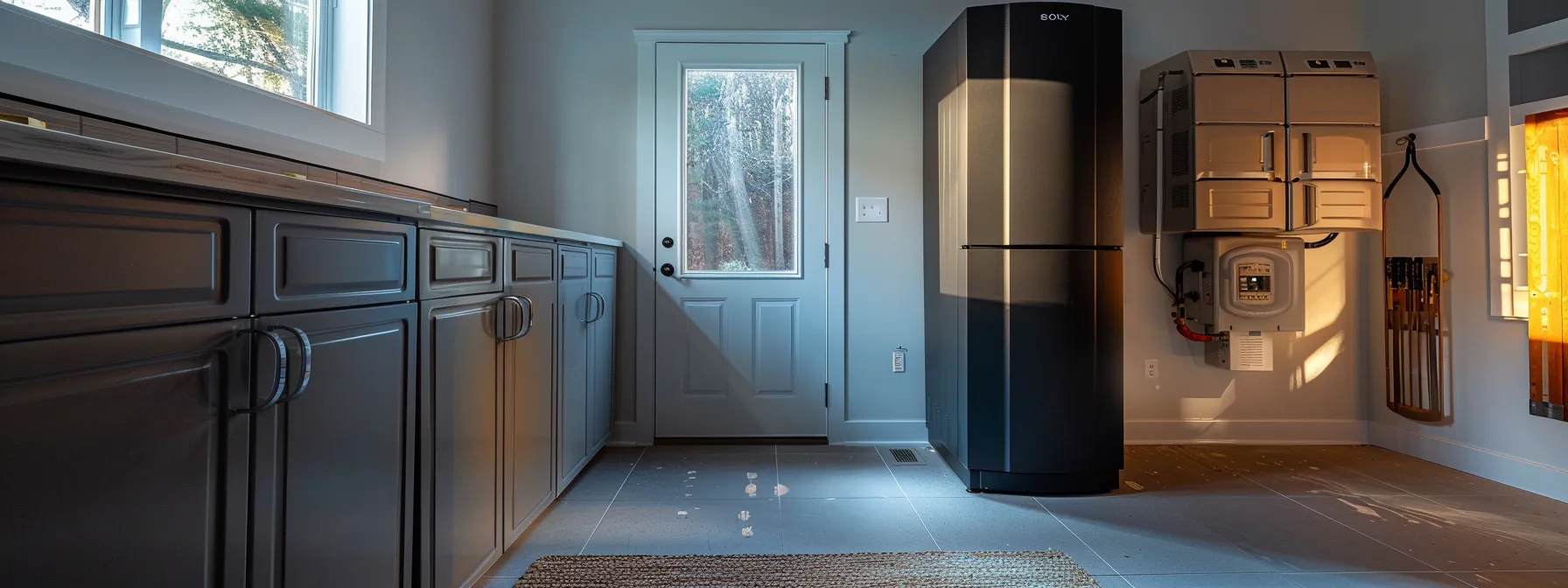
This section addresses key questions about high efficiency furnaces, including potential energy savings, considerations for oil systems, and optimal maintenance practices. Homeowners will gain insights into the cost-effectiveness of upgrading, including factors like heat exchanger efficiency and radiator performance. The information covers important aspects of high efficiency furnaces, helping readers make informed decisions about their heating systems.
How Much Can You Save With a High Efficiency Furnace?
High efficiency furnaces can lead to significant energy savings for homeowners. These advanced systems, with AFUE ratings of 90% or higher, can reduce energy consumption by up to 30% compared to older models. Homeowners seeking furnace repair in their area can benefit from upgrading to a high efficiency unit, potentially saving hundreds of dollars annually on heating costs.
The actual savings from a high efficiency furnace depend on various factors, including local climate, home size, and energy prices. Homeowners can estimate their potential savings by comparing their current energy bills with the projected efficiency of a new system. Many furnace services offer energy audits to help homeowners calculate their specific savings potential based on their zip code and usage patterns.
While the initial investment in a high efficiency furnace may be higher, the long-term savings often justify the cost. Homeowners should consider factors such as increased property value, improved comfort, and potential insurance discounts when evaluating the overall benefits of upgrading. The following list outlines key factors affecting energy savings with a high efficiency furnace:
- AFUE rating of the new furnace
- Local climate and heating degree days
- Home insulation quality
- Thermostat settings and usage patterns
- Regular maintenance and professional servicing
Are There Any Downsides to High Efficiency Furnaces?
While high efficiency furnaces offer numerous benefits, they do have some potential drawbacks. The initial cost of a high eff furnace can be significantly higher than that of standard models, which may deter some homeowners in Indiana from upgrading. However, the long-term energy savings often outweigh this upfront expense, especially when combined with a programmable thermostat for optimal efficiency.
High efficient boilers and furnaces may require more complex installation processes, potentially leading to higher installation costs. These systems often need special venting and condensate removal systems, which can add to the overall expense and may require modifications to existing home structures. Homeowners should consult with HVAC professionals to assess their home’s compatibility with a high efficiency system.
Some high efficiency furnaces may produce more noise during operation due to their variable-speed blowers and multiple stages of heating. Additionally, these systems can be more sensitive to improper maintenance, potentially leading to reduced efficiency or performance issues if not serviced regularly. Homeowners should factor in the cost and importance of routine maintenance when considering a high efficiency furnace upgrade.
What Maintenance Is Required for Optimal Performance?
Regular maintenance is crucial for optimal performance of high efficiency furnaces. Homeowners should schedule annual inspections with a professional furnace repair service to ensure all components are functioning correctly and efficiently. These inspections can identify potential issues before they escalate, potentially saving on costly repairs and maintaining the system’s energy efficiency.
Routine maintenance tasks include replacing air filters every 1-3 months, depending on usage and environmental factors. This simple step helps maintain proper airflow, reduces strain on the system, and improves indoor air quality. Homeowners can often perform this task themselves, contributing to cheap AC repair and maintenance costs over time.
Professional 24/7 furnace repair technicians should clean and inspect key components annually, including the heat exchanger, blower, and ignition system. These services may qualify for tax deductions under energy efficiency programs, helping offset maintenance costs. Regular upkeep ensures the furnace operates at peak efficiency, combating the effects of inflation on energy bills and extending the system’s lifespan.
Frequently Asked Questions
What is the average cost of upgrading to a high efficiency furnace?
The average cost of upgrading to a high-efficiency furnace typically ranges from $3,000 to $7,500, including installation. Factors affecting the price include the furnace’s AFUE rating, brand, size, and any additional ductwork or modifications required for the upgrade. Homeowners can expect long-term savings on energy bills with a high-efficiency furnace, potentially recouping the initial investment over time. It’s advisable to obtain multiple quotes from HVAC professionals and consider available rebates or tax incentives to offset the upgrade costs.
How long does it typically take to install a new furnace?
The installation time for a new furnace typically ranges from 4 to 10 hours, depending on various factors. These include the complexity of the system, the size of the home, the type of furnace being installed, and whether any additional modifications to the existing HVAC infrastructure are required. Experienced HVAC technicians can often complete a straightforward furnace replacement in a single day. However, more complex installations, such as switching from an electric to a gas furnace or installing a high-efficiency system, may take longer and could extend into a second day of work.
What AFUE rating should I look for in a high efficiency furnace?
For a high efficiency furnace, look for an AFUE (Annual Fuel Utilization Efficiency) rating of 90% or higher. AFUE ratings indicate the percentage of fuel converted to heat, with higher numbers signifying greater efficiency. Most high-efficiency furnaces available today offer AFUE ratings between 90% and 98%. When selecting a furnace, consider models with AFUE ratings of 95% or above for maximum energy savings. While these units may have a higher upfront cost, they can significantly reduce long-term energy bills and provide better comfort. Always consult with a professional HVAC technician to determine the best option for your home.
Can I install a high efficiency furnace myself or do I need professional help?
Installing a high efficiency furnace yourself is not recommended due to the complexity of the system and potential safety hazards. These furnaces require precise installation for optimal performance and efficiency, including proper venting, electrical connections, and gas line adjustments. Professional HVAC technicians have the expertise, tools, and certifications necessary to safely install high efficiency furnaces. They ensure compliance with local building codes, proper system sizing, and can provide warranties on their work. Hiring a professional is crucial for the safety, efficiency, and longevity of your heating system.
How much can I expect to save on energy bills with a high efficiency furnace?
High-efficiency furnaces can significantly reduce energy bills, typically saving homeowners 15-30% annually compared to standard models. The exact savings depend on factors like local energy costs, home size, insulation quality, and climate. Proper installation and maintenance also play crucial roles in maximizing efficiency. To estimate potential savings, consider your current energy costs and the efficiency ratings of your existing furnace versus a new high-efficiency model. AFUE (Annual Fuel Utilization Efficiency) ratings indicate how much heat is produced from the fuel consumed. Higher AFUE ratings translate to greater energy savings and lower utility bills.
Conclusion
Upgrading to a high efficiency furnace offers homeowners significant benefits, including enhanced comfort, substantial energy savings, and reduced environmental impact. These advanced systems, characterized by AFUE ratings of 90% or higher, provide superior temperature control and improved air quality while consuming less energy than older models. While the initial investment may be higher, the long-term savings on utility bills and potential tax incentives often justify the cost. By choosing a reputable HVAC contractor and maintaining the system regularly, homeowners can maximize their furnace’s performance, extend its lifespan, and enjoy a more comfortable, energy-efficient home for years to come.